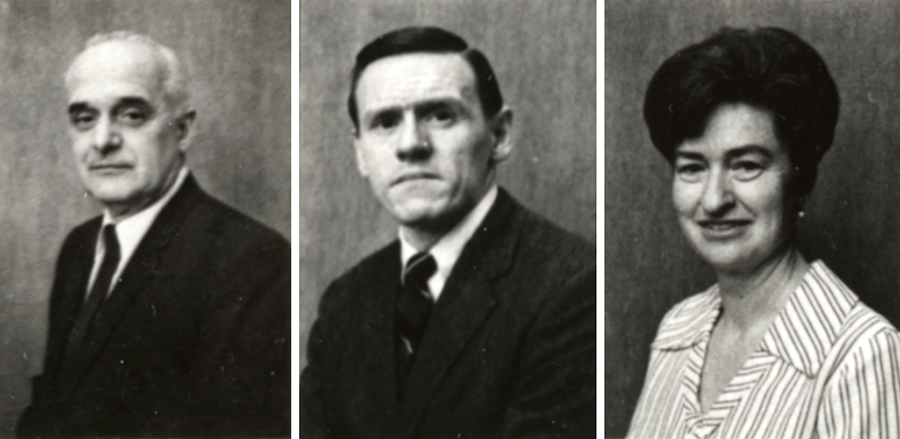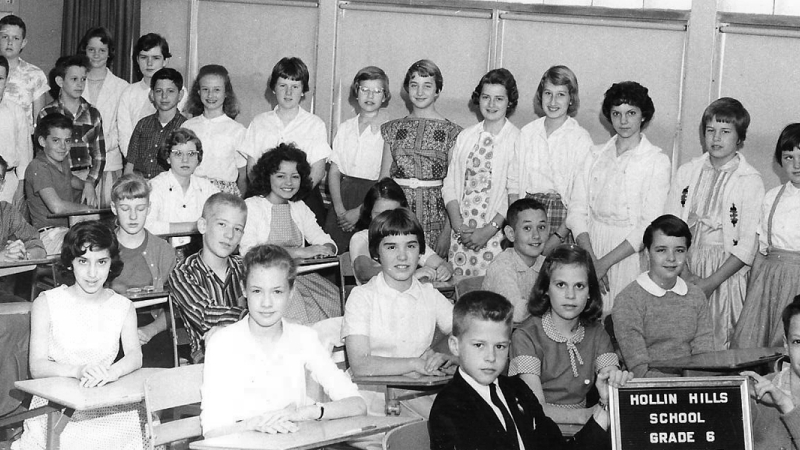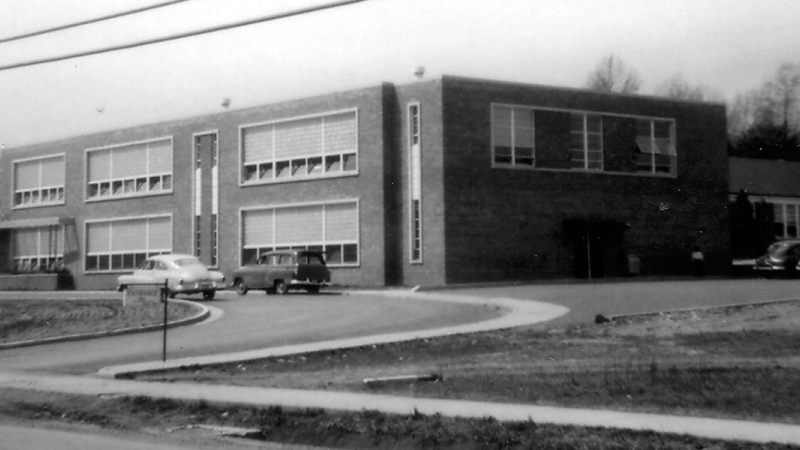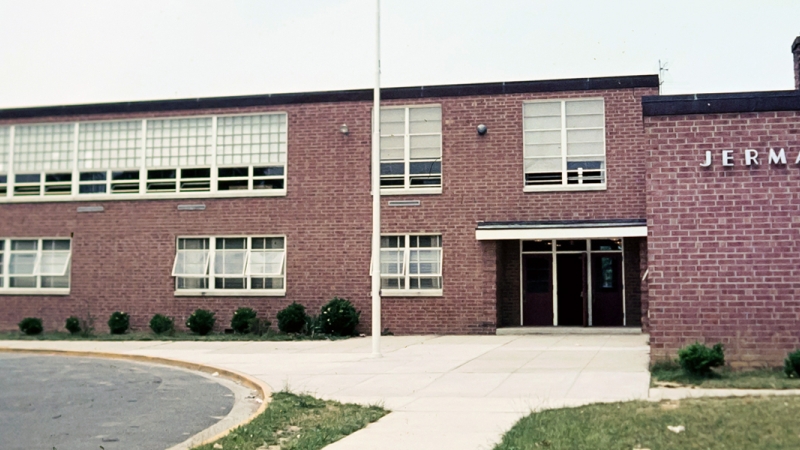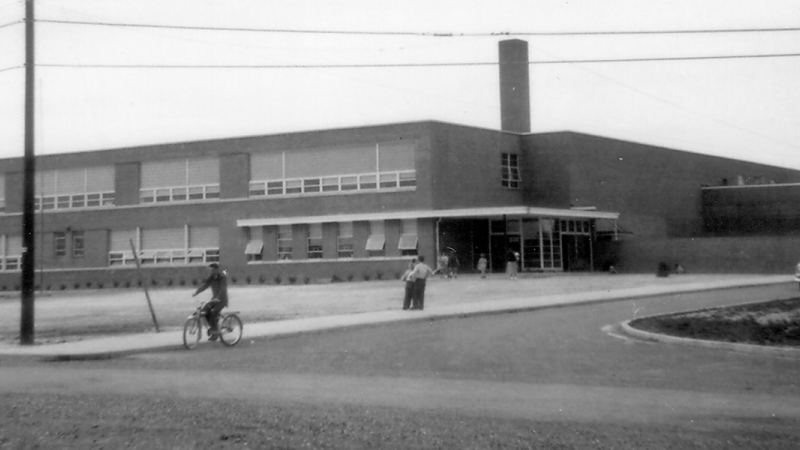
School History: Willston Elementary School
Remembering Our Past
In February 1950, William Magazine, developer of the Willston apartment complex in Seven Corners, approached the Fairfax County School Board with a proposal for the construction of a four-room school on land he was planning to deed to the Board. Legal questions arose over the proposal and no action was taken. Mr. Magazine and others presented a new proposal in May 1950 for the construction of an eight-classroom building, which was to be built at cost by his company and purchased by the School Board upon its completion.
In June 1950, the School Board was informed that plans for the school at Willston had been sent to the office of the State Supervisor of School Buildings by the architects, Dixon & Norman. However, because contract details had yet to be finalized, the building would not be finished in time for the opening of schools in September. One month later, in July 1950, contract negotiations with the developer stalled and the School Board instead requested the use of eight apartment units in the Willston complex for temporary classroom space until a school could be constructed.
Additional complications arose in July 1950, when a lawsuit was brought against the School Board to invalidate a $10.5 million school bond issue that had recently been approved by voters. The bond issue was slated to fund the construction of 12 new schools and additions to 19 schools. Release of the funds was delayed until May 1951, when legal pressure by the School Board convinced the two men who initiated the suit to withdraw their appeal in the case from the Virginia Supreme Court.
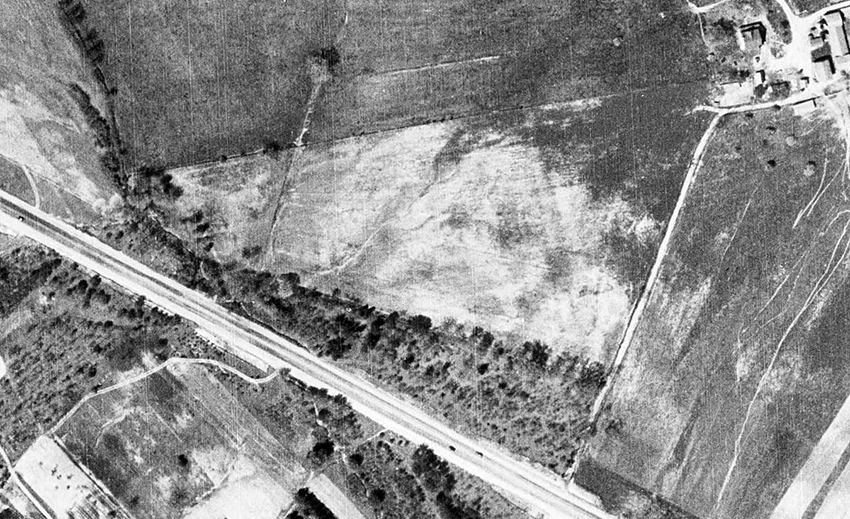
The First Year
In August 1950, the School Board learned that there was an end-of-year surplus in the school system’s operating fund and directed that the money be used to fund the construction of the Willston School. The project went out for bid and the construction contract was awarded on August 23, 1950, to Eugene Simpson & Brother, Inc. Built at a cost of $99,431, the eight-classroom Willston Elementary School was scheduled to open in late January 1951, but construction delays hampered completion of the building until May 1951.
Future Willston Elementary School students began the 1950-51 school year at Oak Street Elementary School in Falls Church, which at that time was still operated by Fairfax County Public Schools. The students moved to the Willston apartment complex classrooms after they became ready in early December. The school in the apartments functioned as an annex of Oak Street Elementary under its principal, Audrey M. Snodgrass. Mary S. Youngs served as the head teacher at the apartments. After Willston Elementary School was completed, Virginia R. Hazelgrove was appointed its first principal.
The First Addition
Before the construction of Willston Elementary School was complete, plans for the first addition to the building were already underway. Unprecedented enrollment growth was occurring throughout eastern Fairfax County. The situation was so desperate that FCPS continued to rent units in the Willston apartment complex during the 1951-52 school year for additional classroom space.
In July 1951, architect Robert A. Willgoos was assigned to prepare the blueprints for an addition to Willston Elementary School. The plans were completed and approved by the state in January 1952. One month later, on February 12, the project contract was awarded to builder E. L. Daniels of Arlington, Virginia, for $269,379. The addition, which included eight classrooms, a multi-purpose room, a library, and a cafeteria, was completed during the 1952-53 school year.
In the fall of 1953, continued enrollment growth made it necessary to partition Willston Elementary School’s rooms in such a way as to house 20 classes in the 16 classrooms, two classes in the multi-purpose room, and one class in the library. First graders attended school on half-day shifts. During the 1953-54 school year, teacher salaries at Willston ranged from $3,100 to $4,900, and Principal Hazelgrove had an annual salary of $5,540. Annie M. Maxey, the school’s part-time librarian, divided her time between Willston and Oak Street elementary schools.
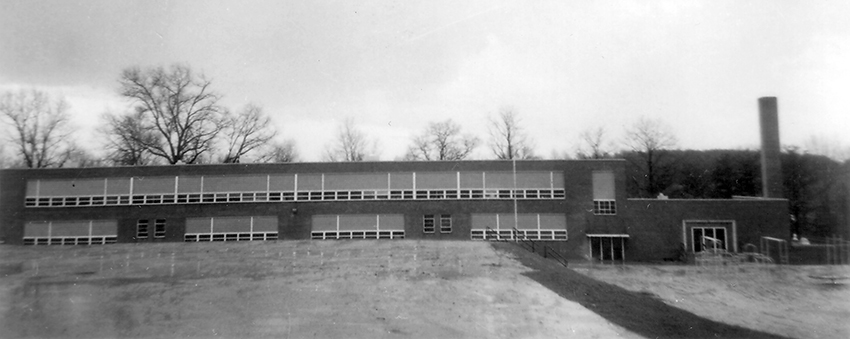
In 1954, the landmark Supreme Court case Brown v. Board of Education declared that laws creating separate public schools for white and Black children were unconstitutional. In response, Virginia entered into a period of massive resistance to school desegregation. In 1959, the Fairfax County School Board proposed a grade-per-year plan of school desegregation. However, in September 1960, the plan was struck down in Federal court by Judge Albert V. Bryan. A short time later, 19 students, who had been parties to the lawsuit against the School Board, were admitted to all-white schools closer to their homes. The desegregation of Fairfax County Public Schools had begun.
A book fair and baked goods sale will be held at Willston Elementary School under the sponsorship of the school’s Parent-Teacher Association tomorrow. The organization seeks to raise $400 for the school library. Parents have been asked to contribute books and baked goods, and the program will include movies for the children. ~ The Evening Star, December 1, 1955
In 1955, Principal Hazelgrove left to open Pine Spring Elementary School, and Harry H. Burks, Jr. was appointed the second principal of Willston Elementary School. Burks had previously been the principal of Belle View and Lee-Jackson elementary schools. He left Willston in 1963 to open Little Run Elementary School.
The 1960s
In September 1960, FCPS opened its first intermediate schools. Prior to this time, elementary schools educated children in grades one through seven. The introduction of kindergarten in elementary schools occurred later in the decade. In 1967, FCPS piloted a kindergarten program in seven schools, which proved so successful that kindergarten was adopted county-wide the following school year. Approximately 8,100 children enrolled in kindergarten classes in the fall of 1968.
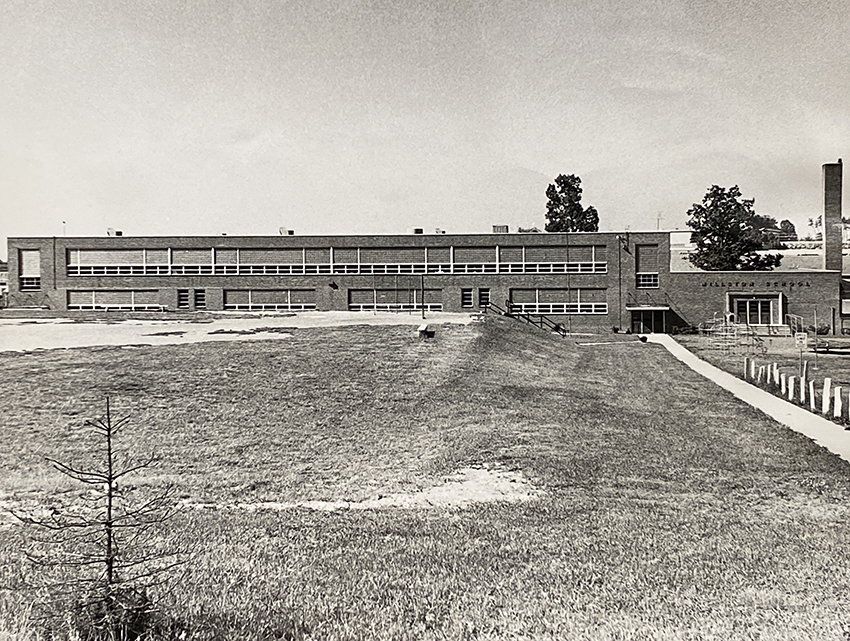
Seventh graders at Willston Elementary School have raised more than $300 for Chilean earthquake relief. James Holger, first secretary of the Chilean Embassy, will be presented a check tomorrow at the school. The youngsters raised the money by cutting lawns, washing cars, babysitting, and baking cookies. ~ The Evening Star, June 9, 1960
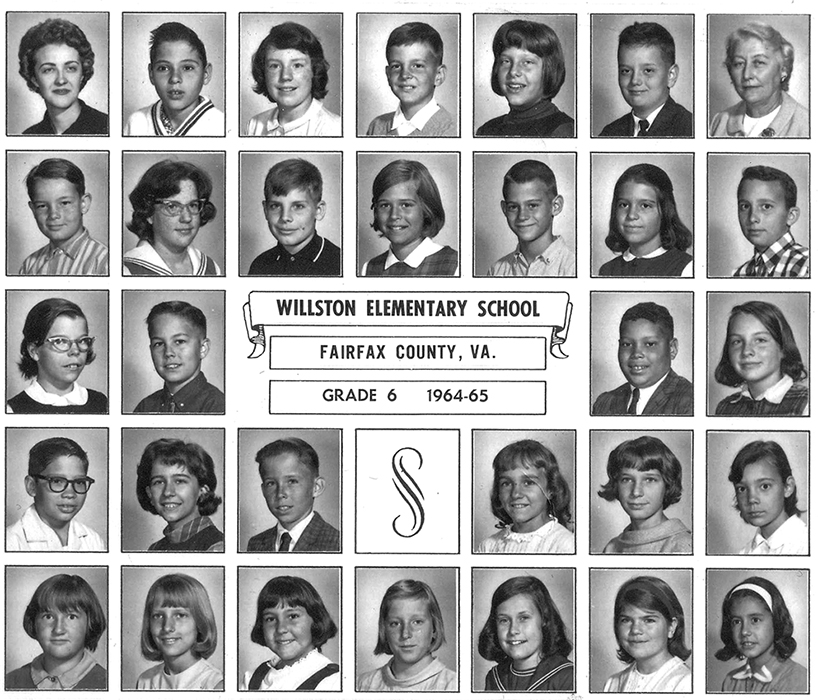
Willston Closes
In 1970, the Willston Elementary School PTA presented an urgent request to the School Board. The PTA asked for a new library, the replacement of obsolete library books, the assignment of a full-time remedial reading teacher, the replacement of old classroom equipment, a room for a clinic, a teacher workroom, and an office for the physical education teacher. The Board responded by adding Willston to the list of schools earmarked for minor renovations during the 1970-71 school year. In November 1971, PTA president Susan Parker expressed her appreciation to the Board for the renovation, which she said improved team-teaching facilities and overall instruction at the school.
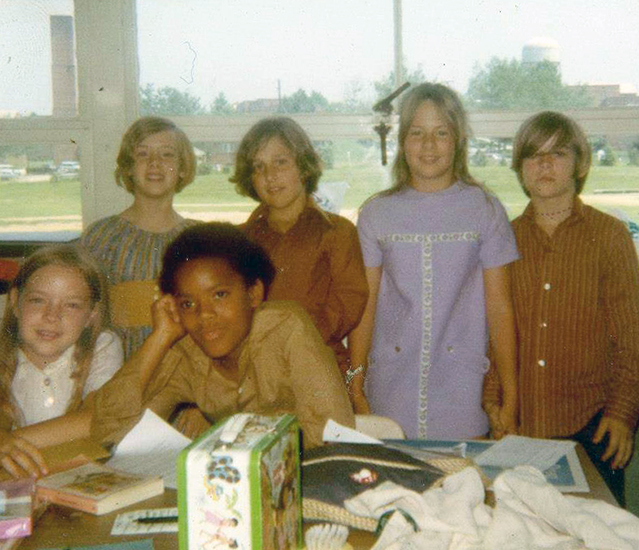
During the 1970s, schools that had seen rapid growth during the post-World War II baby boom were suddenly faced with an abundance of empty classrooms. This resulted in the closure of many schools in eastern Fairfax County during the 1970s and 1980s. Willston was the first elementary school chosen for closure. The age of the school, its location, and the small size of the school property which prohibited future growth were some of the deciding factors which led to the closure of the school.
Initial discussions around the possible closure of the school appear in the School Board meeting minutes of March 23, 1972. In March 1973, FCPS Superintendent S. John Davis recommended that Willston Elementary School continue to operate through the 1973-74 school year, housing kindergarten through the sixth grade, and that it be revaluated for possible closure at a later date. A community meeting was held to gather feedback and area residents requested that if the school were to close that the School Board allow the building to be used for recreational and community programs.
On April 18, 1974, the School Board voted to close Willston Elementary School permanently in June 1974, and shift its students to Bailey’s, Beech Tree, and Sleepy Hollow elementary schools. Sleepy Hollow was scheduled to undergo renovation during the 1974-75 school year, so it was decided to house the entire student body of that school in the vacated Willston building, thereby making it possible to complete the renovation of Sleepy Hollow more quickly.
After the renovation of Sleepy Hollow Elementary School was completed, Willston Elementary was converted to office use. The building housed personnel in school system’s Department of Instructional Services from 1976 to 1980. In March 1981, the Willston School was declared surplus property by the School Board and was transferred to the Fairfax County Board of Supervisors in 1983. Shortly thereafter the building became a multicultural center offering adult English as a Second Language classes and vocational training.
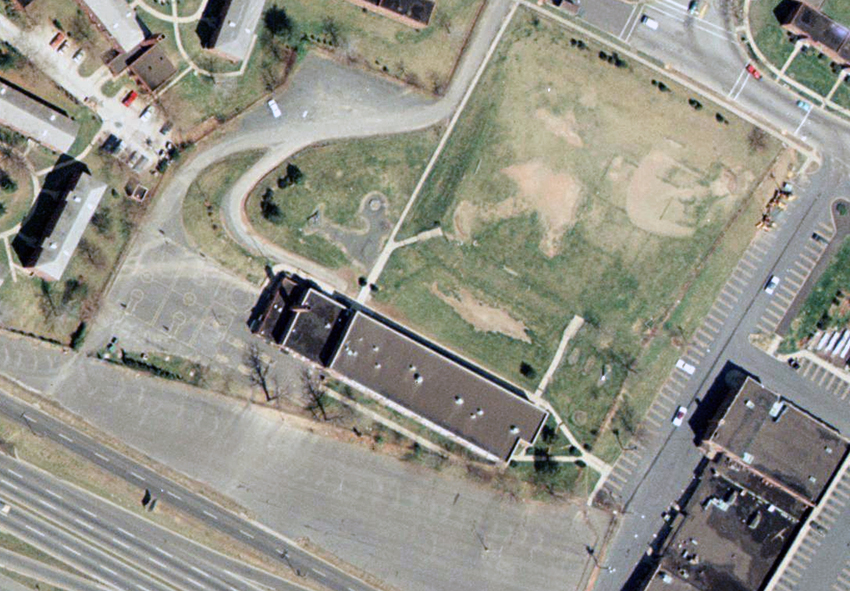
The Principals
The principals of Willston Elementary School were Virginia R. Hazelgrove (1951-1955), Harry H. Burks, Jr. (1955-1963), Bertha D. Noble (1963-1965), C. Doyle Bright (1965-1969), Betsy H. Manning (1969-1972), and Judy L. Caldwell (1972-1974).
